Disclaimer: I’m going to try and be as sensitive as possible in this entry…because the topics discussed could be a bit sensitive. This time, I’ll be talking about the March 11 disaster in Fukushima and also about WWII. As much as possible, I hope to keep this post/discussion non-agressive even as I share my opinions (and these are mine alone).
Still, if I step on any toes, I ask for forgiveness and I’m more than happy to engage in respectful debates/discussions.
As a student, learning about Singapore’s history in class, one of the things we learn is how Japan invaded Singapore and how the British surrendered us to the Japanese. The years that followed under Japanese rule, weren’t pleasant according to the books.
This ended when Fat Boy and Little Man were dropped on Hiroshima and Nagasaki. This led to the end of the war in Asia and this was one of the factors that led to Singapore’s eventual independence. So the bombs were good in my young mind’s eye. I really didn’t think of them as any more than bombs that were “bigger than usual”. Good bombs that helped end the war.
I thought nothing more about this topic and to this day, I don’t hold any major grudge against modern day Japan. Over the years, I read news about the Yasukuni Shrine, Japan’s tensions with China and Korea and a little more about the Atomic Bombs.
Then just before my final year in college, when my college and I were in talks about allowing me to go on an exchange cum “internship” at Toho Gakuen College of Drama and Music, March 11th happened. March 11th 2011 was the date of the Tohoku earthquake and tsunami. Soon after, the Fukushima Daiichi and Daini Nuclear Power plants had meltdowns. Many lost their lives or were reported missing. Others had to be evacuated.
That was probably when I first started reading articles condemning the usage of nuclear power. Some of these articles described how it was absurd that Japan used nuclear power when it was the first and only country to experience the horrors of it being used in war. It made me stop…and maybe realize that the bomb could have been a sad thing. I read things online. Somewhere in my mind, I might have realized “Ah, how sad…” but that was it.
Then I went to Tokyo for my exchange between June and July 2011.
I remember watching a protest march against nuclear power plants. There was also a curious incident when I was walking back to my place from Shinjuku station when a lady sitting under a flight of stairs, called out to me. She asked me to fold paper cranes with her, telling me she was from a group that was from Hiroshima. She told me that, she too, like many people from Hiroshima and Nagasaki were against the Nuclear Power Stations and that she was folding paper cranes in protest. She told me that the group believed that all victims of the atomic bombs had become cranes and even invited me to a gathering.
At that time, I was more scared of what she said to me…but her words stuck in my mind. Prior to this, I never even thought much of nuclear power or weapons. Singapore has none of that, so I never had reason to think about it or care about it. Now, I started to have some form of an opinion…still nothing solid took form; just the idea that nuclear power must be scary. I also slowly developed a vague idea that the dropping of the atom bombs had caused a great deal of devastation by reading articles and watching shows about it. It shocked me a little.
Coming back to Japan on JET, I flippantly thought of visiting the historical landmarks from World War II and Fukushima. I wanted to see things with my own eyes. I really didn’t expect what ended up actually seeing.
The first place I visited was Nagasaki. The silver week break was upon us, and the weather was projected to be fantastic. One of the ALTs wanted to visit, and I grabbed at the opportunity. “Great, the first one off my check list”, I thought to myself. Nagasaki shocked me in a way that I’d never been shocked before. I’d never seen that extent of damage and destruction anywhere. I walked through the Peace museum, my heart getting heavier by the second. Things affected by the blast, bottles melted and molded into something alien and grotesque, personal artifacts burnt beyond recognition, descriptions of the after effects of the blast that carried on far beyond the war itself. Learning about victims suffering days, months and years later, learning about children being born with defects or deformities as a result of the bomb, all this was completely beyond me. It was beyond what I had expected.
I visited the Urakami Cathedral. It had been incredibly close to the epicenter and since Mother Mary’s birthday was around the corner, the mass that morning had been in full attendance. Everybody died and of the few things that survived the blast was the head of a Mother Mary statue with its eyes hallowed out by the blast. Visiting the Cathedral, I was shown into a small room where the original head was kept. I’m not Catholic or even very religious, but that moment of being alone in the room with the blank eyes of Mother Mary on me gave me the chills. I couldn’t stay in the room for long and felt I didn’t deserve to be in her presence. I later read an article of how the atomic bombs and their crew had actually been blessed by a priest prior to their launch. It’s a shock to the senses.
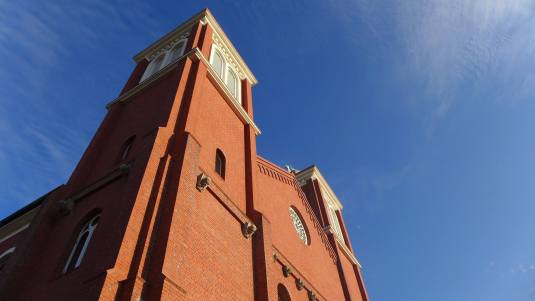
Nagasaki had had the largest Christian population in Asia at that time and many of these Christians had survived incredible amounts of persecution over the years when Christianity had been considered illegal in Japan. The atom bomb did something in a moment that even Japan hadn’t managed over hundreds of years. Those implications were completely and totally horrifying. Walking through Nagasaki seeing areas affected by the war, was a punch in the gut. Still a part of me felt, “But they did something to deserve this. They attacked countries, killed people. A part of this is on them.” I want to be clear that this was something that I THOUGHT at that time and not my current opinion. However, I want to try as much as possible to document my thought process through this.
It was around that time that I also started talking to an artist friend of mine. She’d been doing some works about Hiroshima and Fukushima. Originating from Niigata prefecture, her family home is incredibly close to the Kashiwazaki Nuclear Power Plant. She told me about her experiences in interviewing Hibakusha (atomic bomb victims) and her anti-nuclear power stance which she decried as nonsensical. She related to me the political motivations behind building the power plants in Japan and showed me pictures and articles that detailed accidents and fatalities caused by nuclear power plants even before the infamous meltdown at Fukushima. She showed me a photo book the documented cases of nuclear power plant worker who had developed various lethal diseases like cancer as a result of mistakes made at the nuclear power plants. She questioned at the manner in which the nation was remembering the atomic bombs and Fukushima.
At the same time, a colleague at work mentioned the Himeyuri Peace Museaum when I mentioned wanted to visit Okinawa. She told me how Okinawa had been one of the few parts of Japan that had engaged in land battle and that the Himeyuri Peace Museum would surely interest me if I wanted to learn about the war history.
So in the January of 2016, when I went on a trip to Okinawa, I decided to visit the Okinawa Prefectural Peace Memorial Museum and the Himeyuri Museum. Both museums were located quite out of the way and I needed a cab to reach there. The experience I had there was yet again, completely devastating. Okinawa is a lot more vocal about the war that most other prefectures, they were a lot more open about admitting Japan’s participation in the war and were also very descriptive about the atrocities commited by and against them.
I visited the Okinawa Peace Memorial Museum first. Something that surprised me was a display of history textbooks teaching the pacific theatre section of WWII. Singapore’s textbook was there too. I’d never seen anything like it and for the first time, I physically saw how the same story could be told from multiple perspectives. Something in me clicked.
Later I went to the Himeyuri Museum. The Himeyuri Museum is dedicated mainly to the female students of the girl schools who had to become nurses when Okinawa was under attack. The museum itself is built over one of the Gamas or caves that wounded soldiers and the student nurses often hid in to stay safe. These girls were mostly high school students, who were one day told that they had to pause to education to serve the country. The girls believed they would be “helping” for a couple of weeks before the country won and they would return to their normal lives. That’s what they were taught to believe.
Most of them died. Due to enemy fire, due to diseases, due to starvation…due to multiple reasons, many of these girls died.
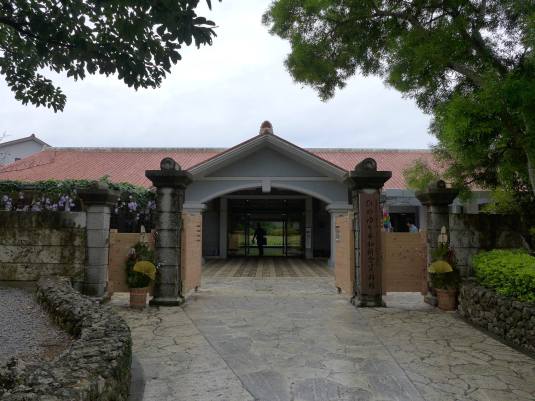
For me, that was unbelievable. I teach high schoolers. I was a high schooler myself, not too long ago. It’s impossible to imagine my girls doing anything described in the museum. I cannot imagine something like that becoming my reality and although I’ve said this multiple times now, it made me feel sick.
Why didn’t I know of this? Why had I only known about the a-bombs that “saved” Singapore? Why had I been so happy for it to have happened? These thoughts ran through my mind.
In the summer of 2016, another friend told me she wanted to visit Fukushima and so, naturally, I had to go with her. When she asked me what I wanted to see there, I really had nothing in mind other than wanting to understand more about the March 11th Earthquake/Tsunami and the nuclear disaster that happened after.
I was on the internet reading for a long time. I wasn’t interested to be a tourist or visit places that I wasn’t supposed to. I wasn’t interested in disrespecting the lives of people who had been affected. But, how do you get any information online without searching incredibly invasive sounding search phrases like “How to go into Fukushima danger zone”?
We were already in Fukushima, and I still hadn’t gotten any information and I found a keyword that people use here to describe visiting places struck by disaster/war/death. They call it “Black Tourism” (terrible term). There are licensed companies that organize tours into the exclusion zone to educate people…I honestly don’t know what or how to think about this. In any case, I discovered that another option was to just take the regular train out to Tatsuta station (the last stop before the exclusion zone) and then take a bus through to Haranomachi. There are only 2 buses that run to Haranomachi from Tatsuta and 2 that go back every day.
So I did that. Reaching Tatsuta, the sky was grey. The station had device to display the radiation levels in the area. Nobody was really there. The Tatsuta neighborhood looked deserted. Suddenly, the radio calisthenics music began playing on the speakers. The cheerful music clashed with the lack of people around. I had no idea what was going on.
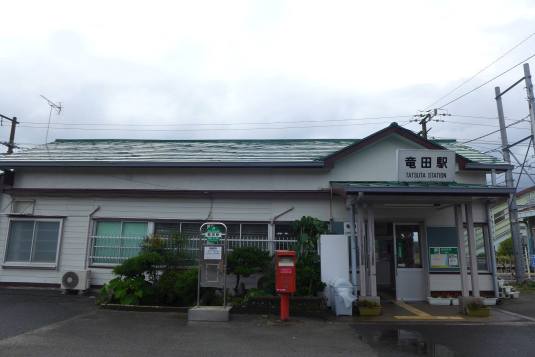
On the way to Tatsuta, I’d seen the ocean. This side of Japan faced the Pacific Ocean. Toyama faces the Sea of Japan which is a MUCH smaller body of water. The Pacific Ocean, on this cloudy day, looked kind of angry. I walked around Tatsuta for about an hour.
Then the bus arrived. Reading things on the newspaper and going through the place yourself is always different. Passing through the exclusion zone reminded me of disaster/end of the world/zombie movie sets. Except it was real. Everywhere, there were rice fields over grown with weeds. Homes, 100 yen shops, pachinko parlors, eateries, all kind of fenced off. I saw a boat in the middle of an over grown field. It looked like a dime a dozen neighborhood in rural Japan, except things had gone so very wrong. It scared me because, that’s the kind of neighborhood I live in in Toyama.
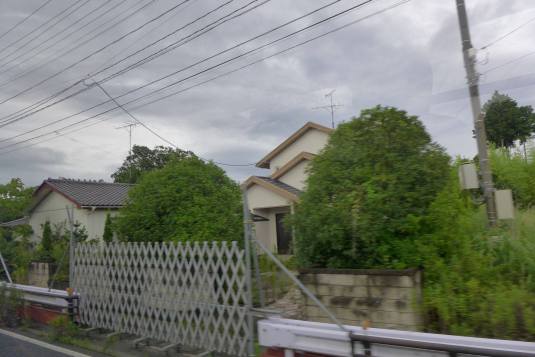
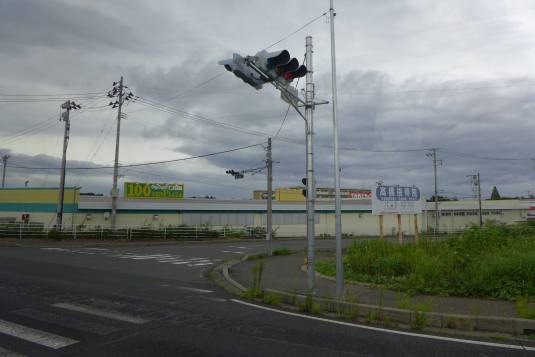

It shocked me at how close the nuclear plants were to the people’s homes. It hit me that more than 5 years had passed since then…and life was still not “back to normal”. Some people would never regain their “normal” back.
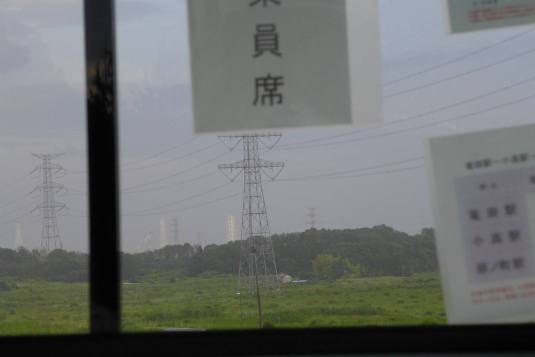
As I sat in a library in Haranomachi, reading about the disaster, the thought that ran through my mind in the moment was how fragile “normal” was and how quickly it could be destroyed. I was confused at this horribly ironic situation that Japan was in and its confusing relationship to nuclear power. I left with no answers and just more questions and thoughts and maybe a strong dislike for nuclear power plants.
Shortly after my trip to Fukushima, I joined my school on its school trip to Tokyo. We had a lot of fun, but on one of the days when I had time to myself, I visited the Yasukuni Shrine and Museum. As mentioned before, history has many points of view. I’d heard of the numerous controversies surrounding this building and decided to go take a look for myself. I’d heard that Class A War criminals had been enshrined and the Abe and many other former prime ministers had visited this shrine. It’s also incredibly close to the Imperial Palace, although the imperial family has stopped supporting it. I had a feeling of dread. I was worried because, I didn’t know what to expect but surely it couldn’t be THAT bad or it would be censored/disallowed.

The shrine itself was less offensive to me in comparison to the museum. And while I couldn’t bring myself to bow down before the main shrine, it really wasn’t all that bad in comparison to the museum.
The museum made statements about its attack on Asia like it was attempting to save us from our colonial masters. The military strength of the war-time military is presented as awe inspiring and powerful. China is insulted. I couldn’t stomach the museum. I literally got a headache about half-way though because I honestly couldn’t believe people bought into this. Again, these are my opinions and if people want to disagree or if you have different views on this, I’m happy to engange with you.
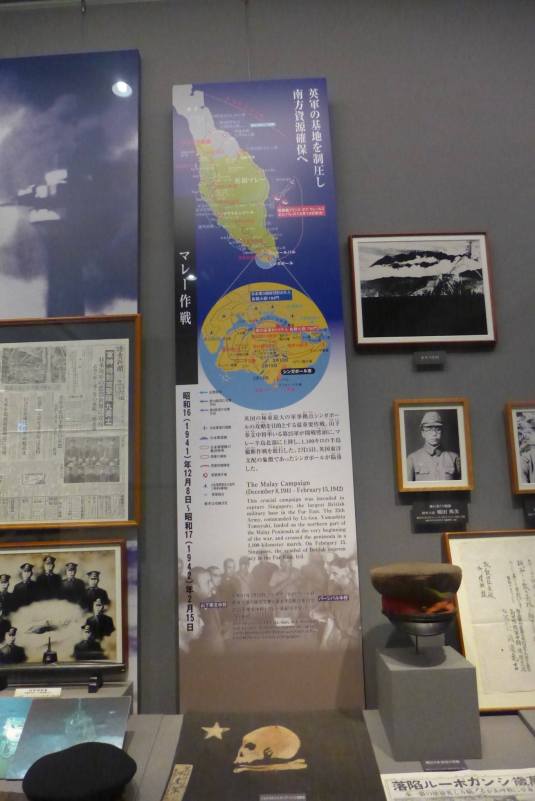
The worst part was watching a teacher bring a group of students through the exhibitions of planes while talking about the strength of Japan and then walking to the final segment where the guest books are. A man had written in it that he’d served Hitler and that he regretted nothing and that this museum was a great example for people to follow. It made me sick.
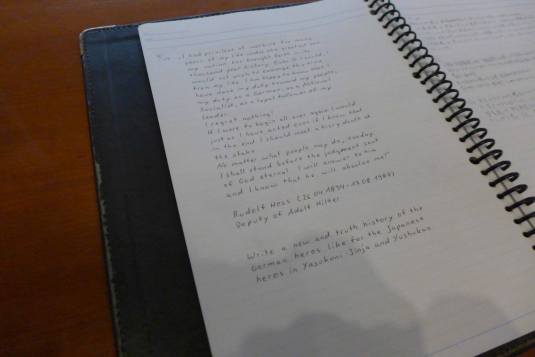
I walked out with a massive headache and a craving for something sweet and some therapeutic rides at Disney Sea.
My trips to these spots stopped for a while until spring 2017. I finally got a chance to visit Hiroshima, my last stop. I was already exhausted by this point. Obviously, I’ve never experienced this level of violence or death in my life, but going to these places left me feeling very drained. So, by the time I reached Hiroshima, I really wasn’t all that shocked anymore. I’d seen similar things in Nagasaki. Hiroshima seemed louder about its opinions of the war though. There was evidence everywhere of the blast. And people were not happy at all about the nuclear power plants.

It was a vocal city, a contrast to the quiet tranquility that I experienced in Nagasaki. I visited the bomb dome…and walked along the river through memorial after memorial till I reached the one where Obama had given his iconic speech of “71 years ago, on a bright cloudless morning, death fell from the sky and the world was changed…” Again, I’d really run out of things to FEEL at this point. I was just walking around, kind of on auto-piolet.
I walked through the peace museum. There’s a big exhibit on JHS students who’d perished because of the work they had to do outside on that day. There are left over finger nails and skin. A young boy’s tricycle. Hair. The paper cranes folded by Sadako, the girl who developed cancer well after the bomb had been dropped. Shadows of people left over on stone steps as a result of the radiation. A lunchbox with its charred, uneaten contents. “What’s there to say anymore?”, I thought as I snapped pictures. It was really crowded and I had to stand in line to see each exhibit. What’s there to think anymore? Hiroshima was stark. Ugly.
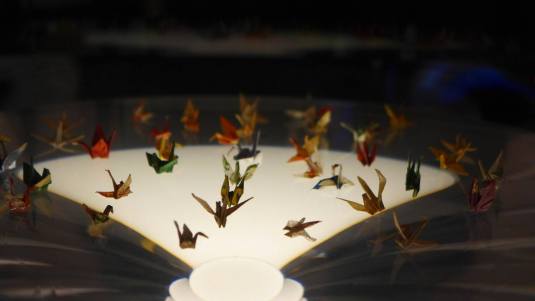
I talked to some people at a mini lecture and it was then I came to a sort of answer for my conflict. Yes, what Japan had done to SO many countries, was very very wrong. There’s no excuse for the lives that had been lost. But that didn’t mean the country deserved the a-bombs. That was not the answer.
This still happens. Syria is being bombed for ISIS. People, who once had their normal, don’t have it anymore. It happens in a flash. I obviously don’t have any peace-keeping solutions or suggestions on me or I’d be working for UN, but I couldn’t, in good conscience, feel that the a-bombs were justified after all that.
The other question that ran through my mind was what I thought of nuclear power and it being harnessed as a form of clean energy. I’m still in conflict. On one hand, I wonder if things would have worked out better without human error. On the other hand, human error will never truly cease to exist. I remembered passing the Kashiwazaki power plant, the closest one to Toyama. People played on the beach nearby. I recalled hearing the words of Oppenheimer in a play I’d worked on as a subtitle operator a few years back. It too had been about the war. Oppenheimer had said, after the bombs had been dropped:
I remembered the line from the Hindu scripture, the Bhagavad-Gita; Vishnu is trying to persuade the Prince that he should do his duty and, to impress him, takes on his multi-armed form and says, “Now I am become Death, the destroyer of worlds.” I suppose we all thought that, one way or another.
I leave you with that thought.
Recent Comments